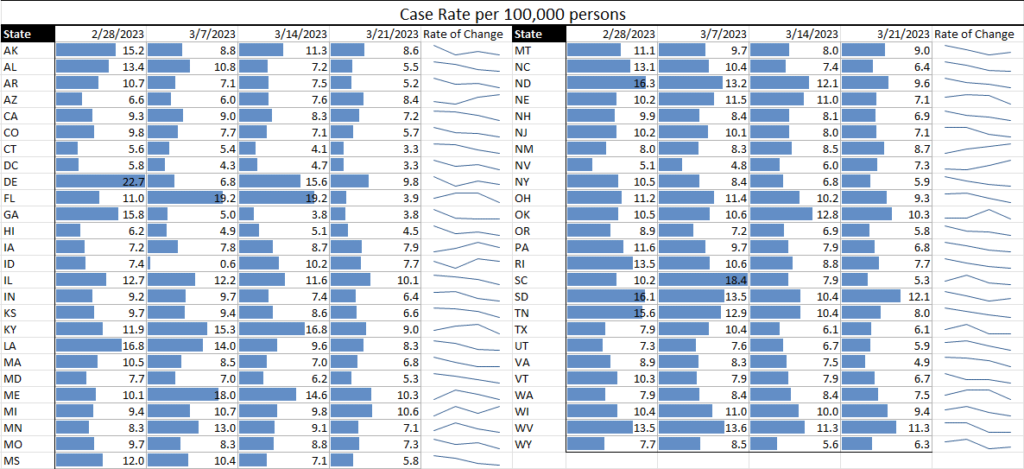The summary of the NYT article entitled The Next Pandemic: Not if, but When stated “The new, aggressive pathogens in China and Saudi Arabia may or may not carve a deadly path to the West. But sooner or later, you can be sure, one will.” That article was written in 2013.
But it wasn’t the first – or the last, with the most recent being even more direct: How to Prepare for the Next Pandemic. This article is based on an exercise, in which the author participated, that was meant to play out what might happen if the world was presented with a new disease that spread quickly, with no warning. The exercise included health ministers and senior public health officials, focused primarily on national and international leadership and cooperation, and a stronger emphasis and speed on research, tests, and vaccines.
While such actions may be out of the hands of businesses (beyond working with your Congressional representatives to push for readiness), there are aspects of that exercise and other lessons-learned articles that can be applied to businesses as well, including: get vaccines in arms much faster, have high-quality protective gear available, change our approach to indoor air quality, and put science first.
What can businesses do?
- Vaccines: Provide opportunities for employees to get vaccinated as soon as practical, whether that be having a health worker come to the business or simply providing information on, and funding for, where and how employees can go.
- Protective gear: Understand the health recommendations and implications and make the highest-quality personal protective gear obtainable available to your workers.
- Air quality: The more that was learned about COVID transmission, the more indoor air quality became a factor. Taking proactive steps now to ensure the best possible air quality in your facility can help with current infectious disease transmission as well as a future respiratory pandemic.
- The science: Inaccurate information, indecisive action, and mixed messaging were key factors in the “catastrophic failures” of the COVID pandemic. While some of this came from high levels of government, many media and social media posts contributed as well. Do your part to diligently follow the science, which will likely be evolving, to seek out the realities, and to pass credible facts on to your management and workers. There will always be detractors, but the more science that is disseminated, the more people that will be reached.
Then, simply maintaining hygienic habits – handwashing, staying home when ill, etc. – and keeping the protections developed during the COVID pandemic at your fingertips, ready for activation when needed will all take your business at least a step or two ahead of the game when, not if, the next pandemic arises.
COVID Risk Matrix:

Influenza:


- Influenza. Cases of influenza B (along with A) have been reported in India. Cases may be linked to weather changes and unseasonable rain.
- Measles. Cases are rising in a few regions in Russia, likely linked to low vaccination rates but also to travelers who brought the infection in.
- Strep.
- Dangerous strep throat cases on the rise in the Peoria, IL area. 2 recent pediatric deaths were reported.
- There have been many cases of human infection with Streptococcus suis in Vietnam. The Ministry of Health calls on all medical institutions to be vigilant so that suspected cases can be detected early. Authorities found that most of the patients had eaten pork products, such as pig blood jelly, or were engaged in slaughtering pigs. Streptococcus suis originates from pigs, and human infection usually results in severe clinical symptoms requiring long-term and expensive treatment. The patient’s condition can also deteriorate rapidly, leading to complications such as septic shock, coma, and multiple organ failure.
- Whooping cough. The number of whooping cough cases identified in Wellington-Dufferin-Guelph in southern Ontario has jumped to 18.
- Botulism. Since late February 2023, and as of 17 March 2023, 65 cases of botulism have been reported in Europe and Turkey. All these cases had history of a recent medical procedure consisting of intragastric injection of botulinum neurotoxin for treating obesity in a single clinic in Istanbul. Although it remains unclear whether this event represents a therapeutic or procedural issue in the involved hospitals, the procedure is not authorized by competent authorities in the EU, and it’s recommended that such treatments be avoided.
- Candida auris. A deadly fungal infection that is hard to treat is spreading through the US, says the CDC. C. auris is not a threat to healthy people. It typically spreads via contact with contaminated environmental surfaces or equipment, or from person to person.






